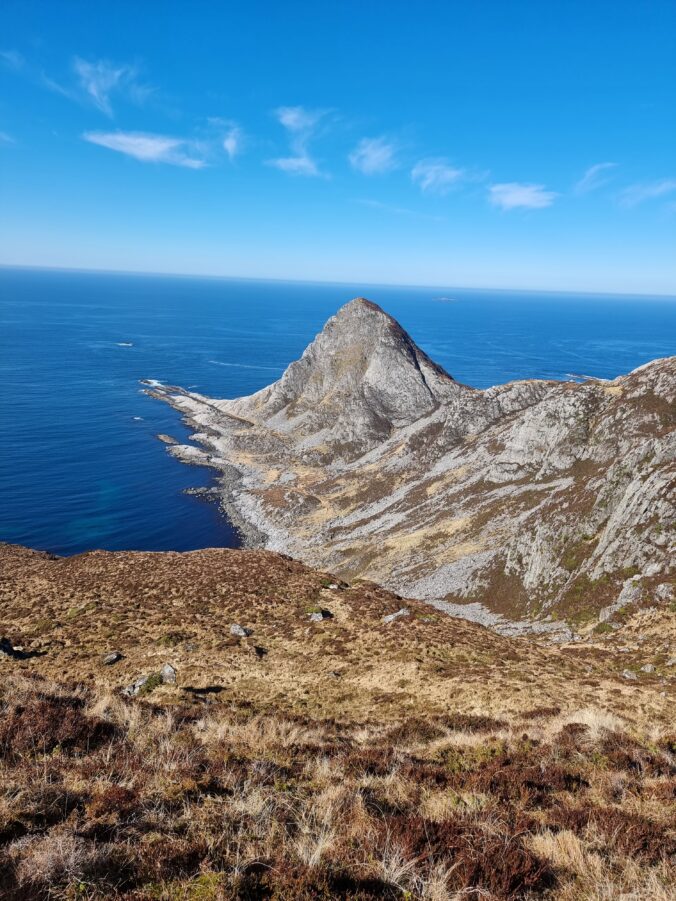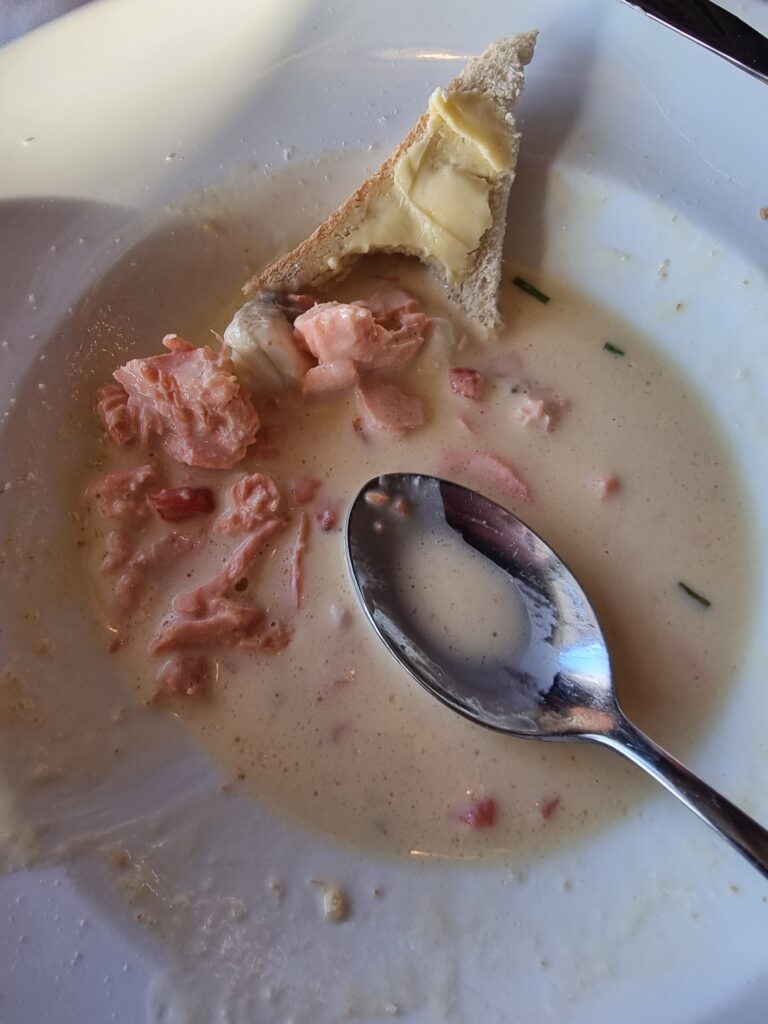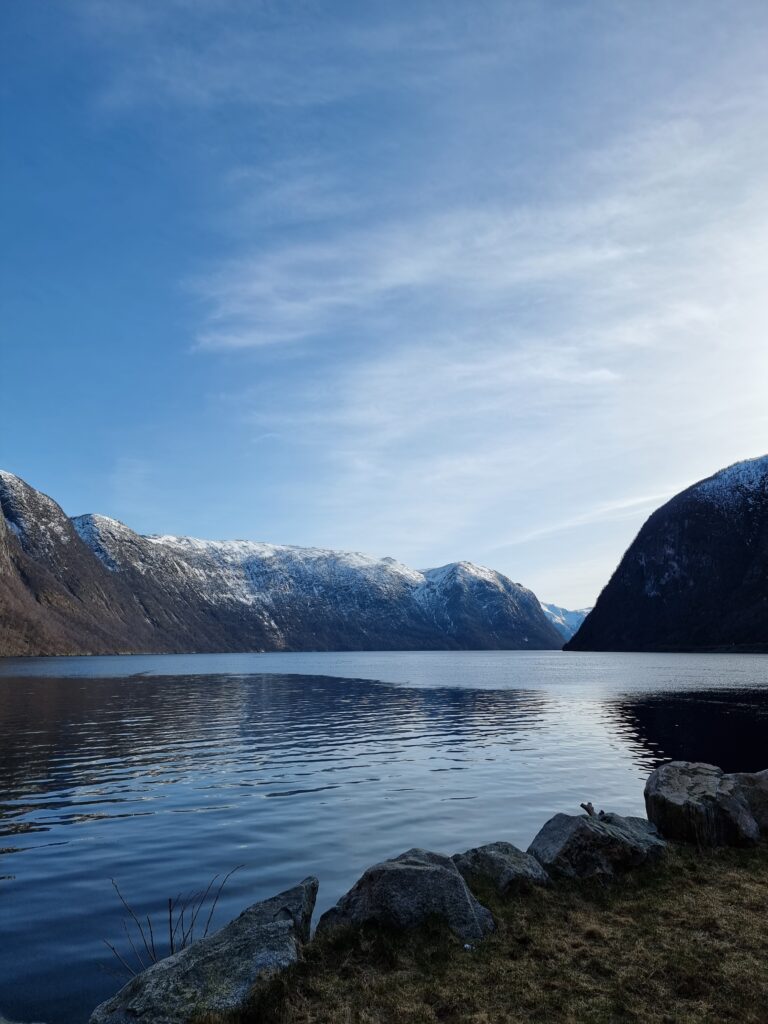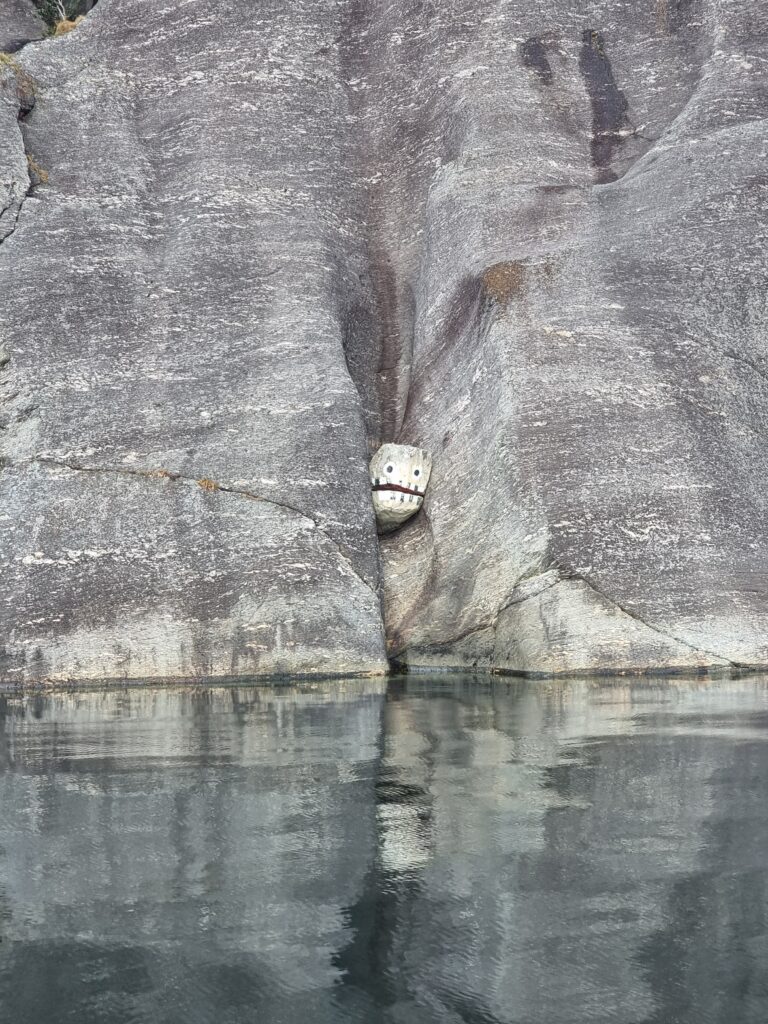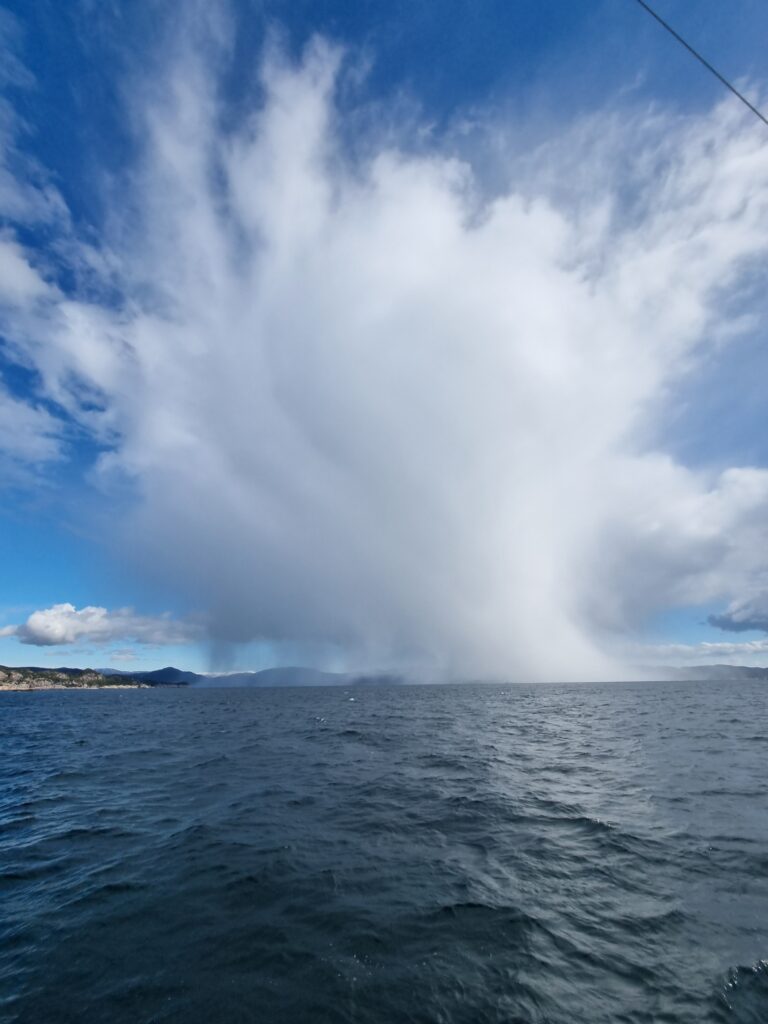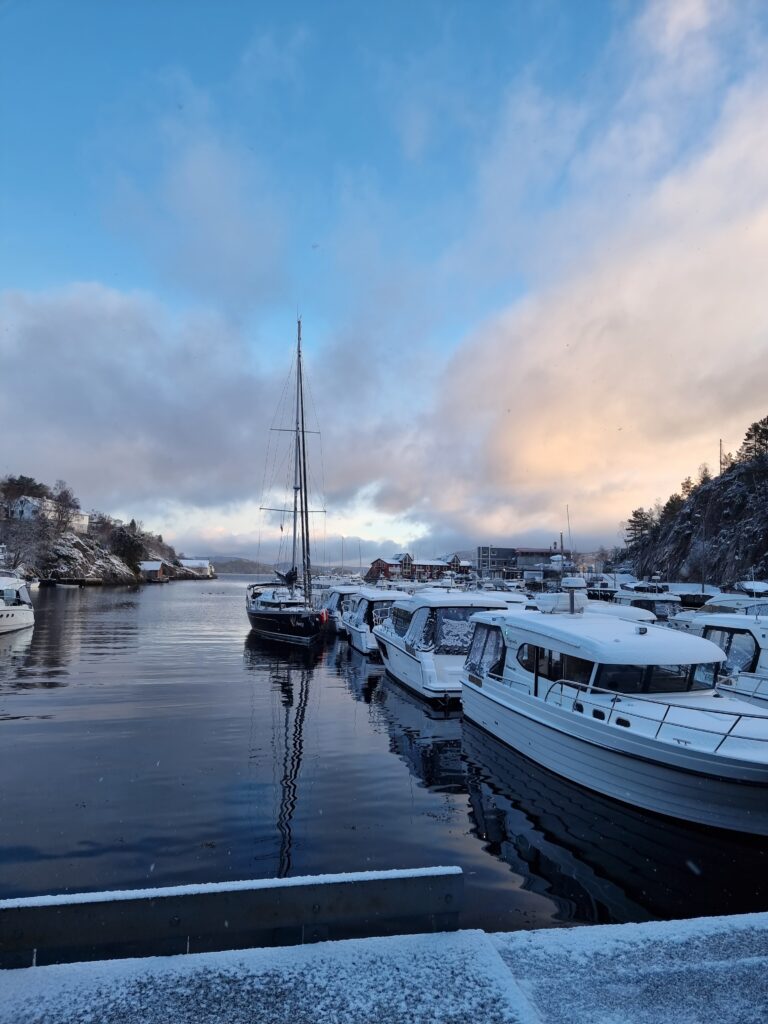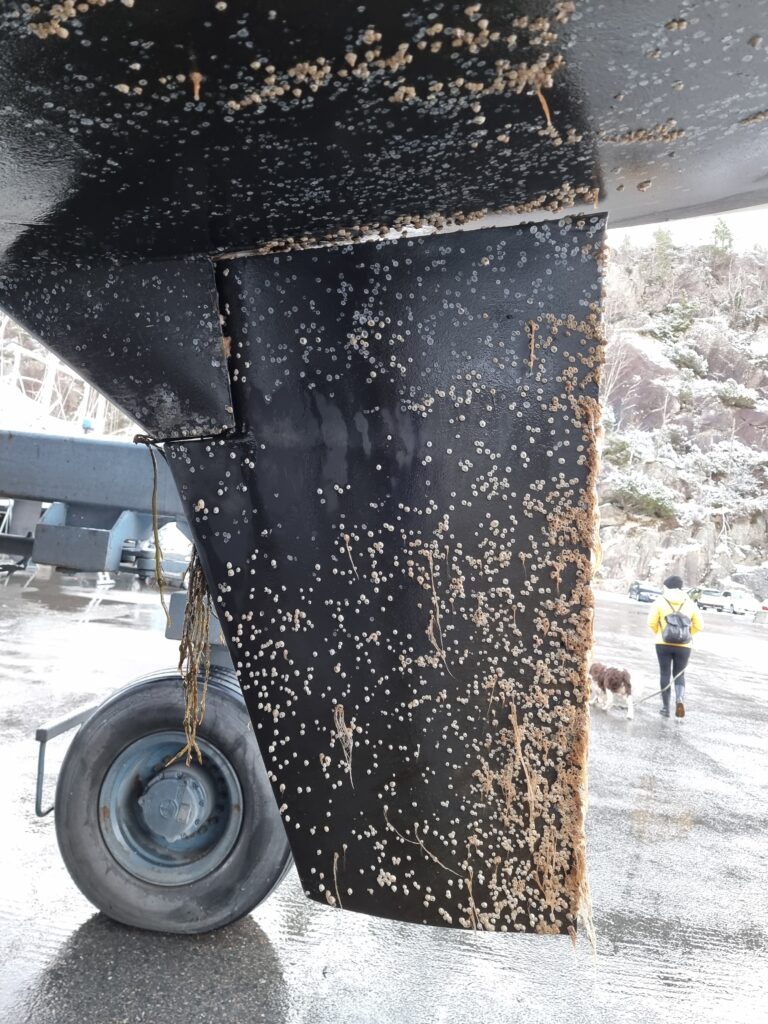
Flåm is famous for its railway. Its one of the most picturesque train trips in the world, according to someone. They were right! It effortlessly climbed through steep mountain scenery, did a U turn inside a mountain and arrived on time to meet the Oslo-Bergen train at the top. You can return to the bottom by foot, mountain bike, skis or as we did, ride the train back down.





The next day some people turned up in a boat even bigger than ours. We decided to leave our new neighbours to the quay and walked up the valley to the Flåm church.



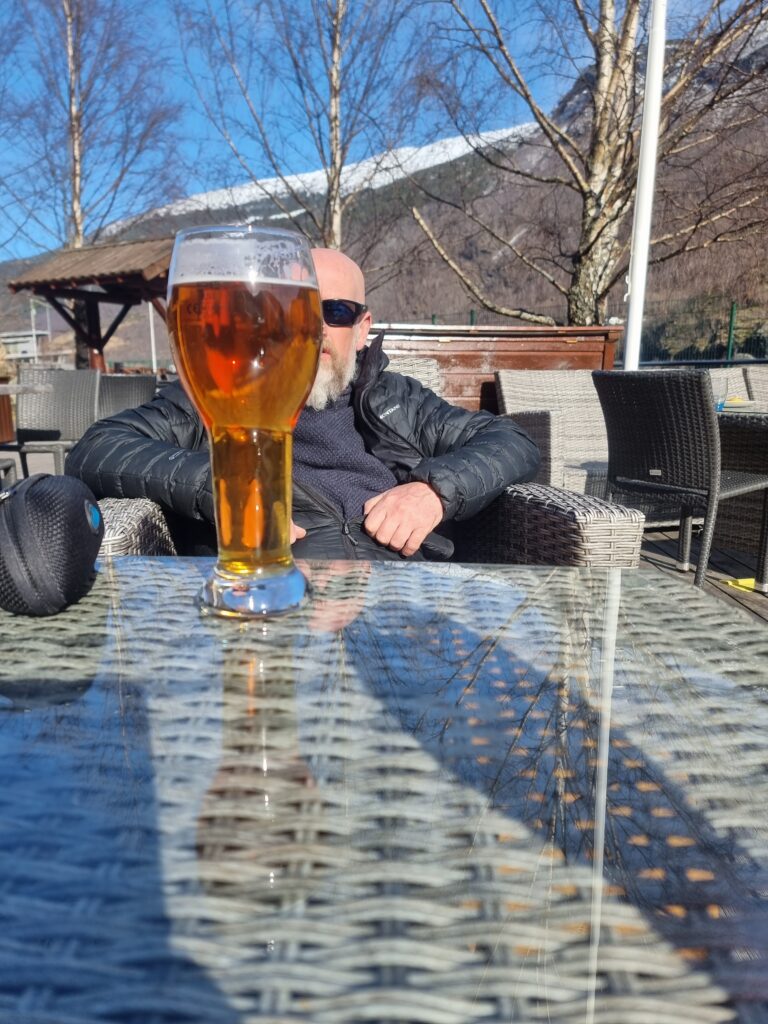
The next day the forecast suggested the trolls would be blowing a hooley down the fjord. It was overcast when we left and the trolls were still sleeping.

We didn’t have to wait too long before they woke and we soon had winds gusting the ususal 8 to 25+ knots. Later in the day we even saw an instant 130 degree wind shift just to keep the sailing fun. We made it over 70 miles almost to the mouth of the fjord by evening.

Out of the fjord and heading north, our next stop was the busy centre of Florø.

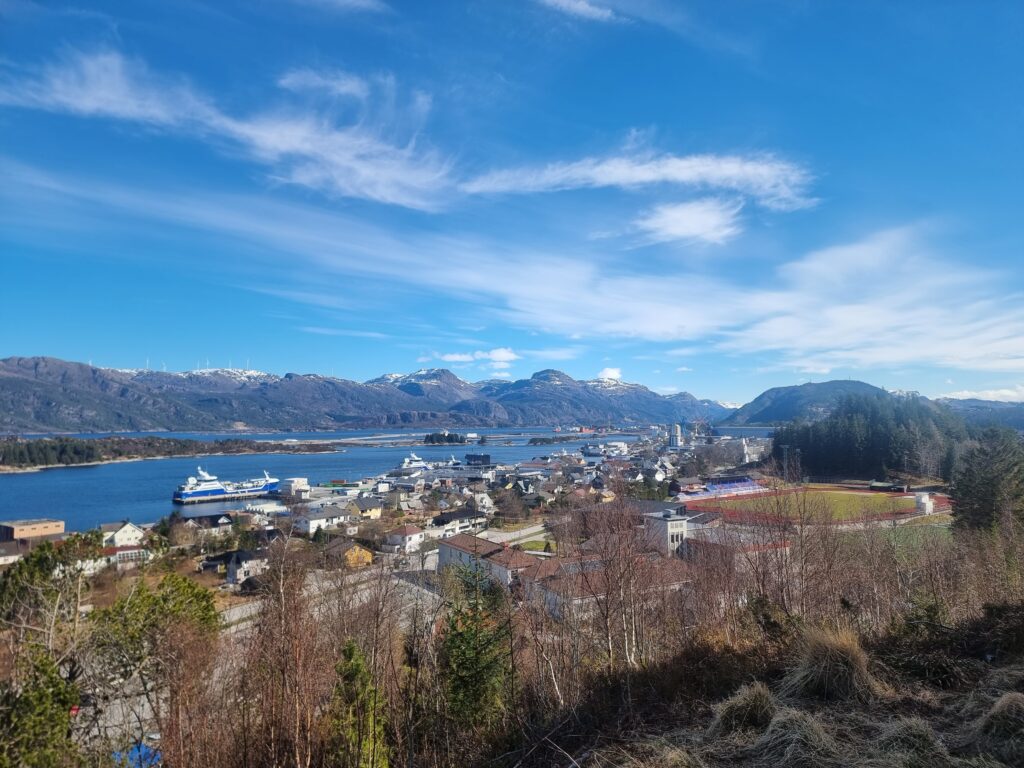
Florø was still emerging from its winter season into the sunshine, so after a two night stop we were off again. We did take the opportunity to walk up the hill and around the island.

Our next stop was Kalvåg, because several people had mentioned a nice restaurant there, and that it was the most popular spot on the west coast for cruisers. I guess the cruisers hadn’t yet emerged from winter as we were the only people there. As we came in, a fisherman in a run about (really) came near us shouting in Norwegian and gesturing to the harbour berths near the restaurant. After shouting “Australian”, English was engaged, and we were advised that we could park in the marina at the side of the restaurant. The wonderful fellow (who we would later learn owns the place) helped us with our lines, told us about the restaurant and where the local facilities were, and we were in! Ready for some seafood.

Entering the restaurant, we were met by the fisherman, now hotel owner, and enjoyed some food and wine. He introduced us to the chief of Norway Football who was in Sydney when Norway won soccer Olympic gold. The next night an Everest climber and reality TV star was giving a talk… it was that sort of place. We were told about the history. It started as a fishing village with up to 12,000 fishermen coming and going, and 6 women (poor ladies). The owner purchased the land from his brother, and built up the restaurant, hotel and other houses to turn it into a tourist mecca. It was delightful and we were treated to breakfast the next morning on the house. We’d love to come back. The hospitality here was second to none and everyone was so friendly. We understand why it is so popular. And the food was delicious.

However, the notorious Stad was calling us. Stadlandet is a headland on the west coast that sticks out into the North Sea and there is no choice but to head out into the cross currents, washing machine waves and shallower waters to get around it. Some sailors say they would prefer to round Cape Horn than Stad, so we were feeling a bit apprehensive about our crossing. It is so bad, that Norway are planning to build a tunnel for ships, yachts and other boats through the headland so that people don’t have to go around. A massive undertaking and speaks to how bad of a reputation the crossing has.
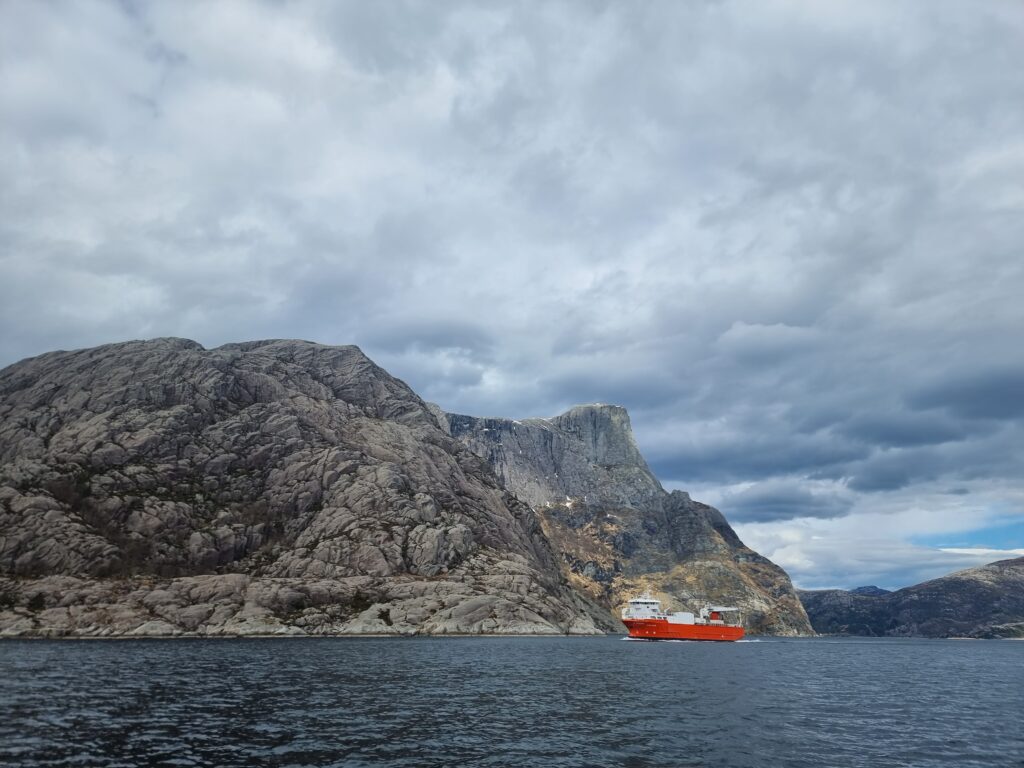
Our Stad jump off was to be a small island called Selja. It has an ancient monastery in honour of Norway’s only female Saint “Saint Sunniva”. She is the patron saint of Bergen, and it is believed that her remains were found in the cave above the monastery, and she was basically completely preserved. She was hiding there from some attackers, and it is said that “the heavens” caused a rock fall, trapping her and her companions inside the cave, but safe from the attackers. But then they were trapped anyway and died. But her body was preserved – therefore, saint. The monastery was established around 1060.




As the sun went down we said an appropriate number of prayers for safe passage the next day. The gods must have been listening as we were blessed with calm seas, or perhaps it was the hours of analysing weather, wave and current data, researching peoples blogs and talking to locals to ensure the best conditions to make the passage.
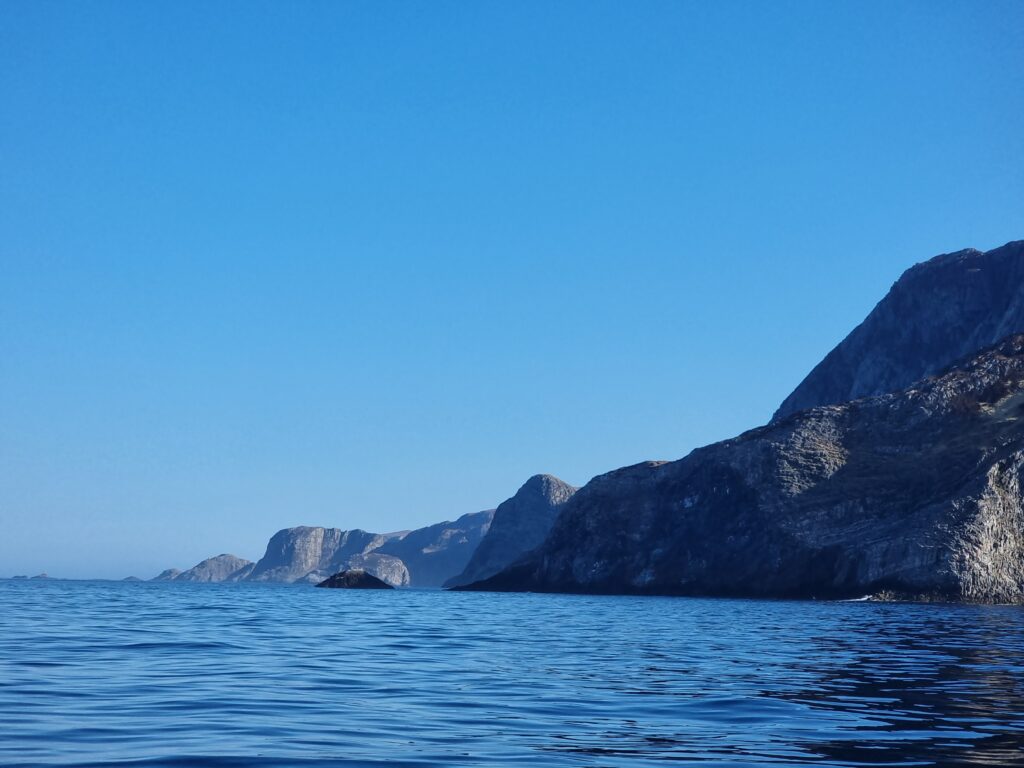
We motored most of the day, and found a great harbour just north of the headland, protected from the non existed swells to tie up for the evening. The island of Sandsøya was to be our home for the next 2 evenings as we pondered what to do after tackling this horrendous crossing. We had been so focused on the crossing that we had neglected to properly plan the coming days, but that’s easily solved with our charts, guide books and 30 minutes.
We headed off to find a treasure cave. Adrian contrived a route to climb over a mountain to get there.
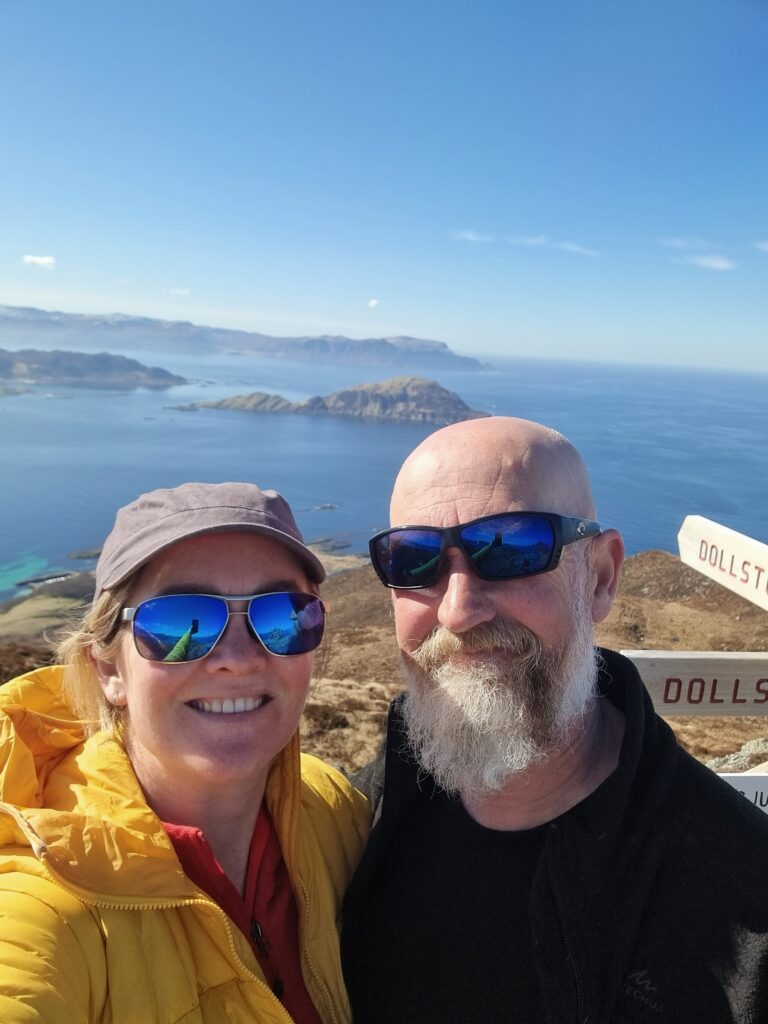




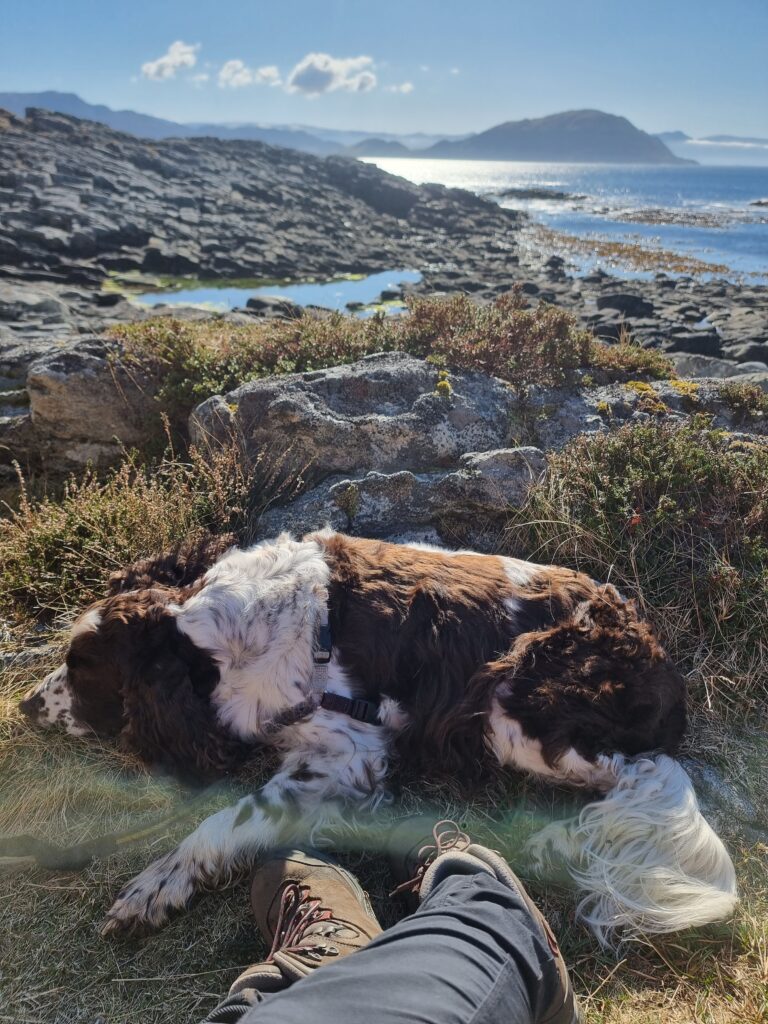


Next morning we headed off in search of another fjord.

